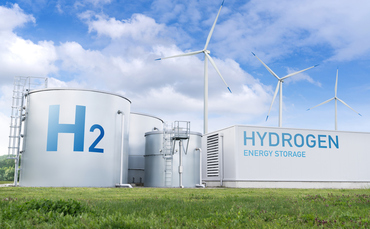Long-term energy storage is gaining rapid traction around the world as decarbonization plans become more ambitious, and in some markets, some of the technologies are already on track to overtake lithium-ion battery storage on a cost basis, according to BloombergNEF.
New research published today by an influential clean energy technology analyst argues that while most long-duration energy storage (LDES) technologies – which can store and transmit energy to the grid for longer periods than standard battery storage – are still in their infancy and cost more than lithium-ion batteries, some technologies are already achieving low costs over long periods or are soon to do so.
As renewable, distributed and intermittent sources of electricity come to dominate power systems around the world, there will be an increasing need for energy storage technologies to balance the grid and ensure security of supply. But while battery storage and other demand side response systems will play an important role, technologies that can store and supply electricity for longer periods will also be a key component.
BloombergNEF’s first-ever long-duration energy storage cost study looked at seven technology groups and 20 specific types and found that some of the cheapest innovations already offer storage that’s cheaper than lithium-ion batteries for durations greater than eight hours.
For example, the average capital expenditures for thermal energy storage and compressed air storage were $232 and $293 per kilowatt-hour, respectively, while the average capital expenditures for a lithium-ion system in 2023 for a four-hour duration system was $304 per kilowatt-hour.
In contrast, gravity energy storage systems, which raise a weight when charging and controllably lower it when discharging, have the highest average capital cost at $643 per kilowatt-hour.
Meanwhile, so-called flow batteries and compressed air technologies have proven to be the most commercially successful so far, and BloombergNEF says these could lead to further cost reductions in the future.
China currently leads the way in cost-effectiveness for established LDES technologies such as compressed air energy storage, flow batteries and thermal energy storage, with average capital investments for these technologies approximately 50 to 70 percent lower than in markets outside China, the study found.
Zhou Yi, a co-author of the study and a clean energy expert at BloombergNEF, said the big difference in costs between China and the rest of the world is because China is “adopting more LDES technologies.”
“While other countries are in the early stages of commercializing LDES technology, China, encouraged by favorable policies, is already developing gigawatt-hour-scale projects,” she said.
“This is especially true for compressed air energy storage and flow batteries, with China setting new records for project scale in the past two years. The installation rate of LDES in China is phenomenal.”
The report defines LDES as a technology that can store energy for at least six hours, adding that cost reductions will depend primarily on deployment in key regions and the development of routes to market. It also says that the cost of LDES is unlikely to fall as rapidly as that of lithium-ion batteries over the decade, given the continued widespread use of lithium-ion batteries in transportation and power.
But despite the lower cost of LDES in China, the technology may still struggle to compete with locally produced lithium-ion batteries, which are the cheapest in the world. The study found that currently, only a few technologies, such as compressed air storage in natural caverns, can beat lithium-ion batteries in terms of per-unit capital cost. BloombergNEF therefore predicts that LDES will likely be competitive with lithium-ion batteries in markets outside China, where they are more expensive.
However, they cautioned that storage duration, project scale and location all significantly affect the capital investment of LDES, so favourable policies and support mechanisms are essential to encourage early adoption and speed up the prospects for commercialisation.
“Despite the high costs of LDES technology outside China, the U.S. and Europe have an opportunity to invest in their home-grown industry and drive innovation and adoption,” said Evelina Stojkow, senior associate for energy storage at BloombergNEF and co-author of the study.
“Markets outside China have developed a wider range of technologies than China, including flow batteries, compressed air, compressed gas, thermal, gravity and advanced pumped hydro. Ambitious clean energy targets, rising costs of lithium-ion batteries and efforts to develop alternative technologies that do not rely on lithium are driving interest in these regions.”
Want to know what’s happening at the cutting edge of sustainability? Check out BusinessGreen Intelligence, the premier source of information for professionals focused on the UK’s green economy.

